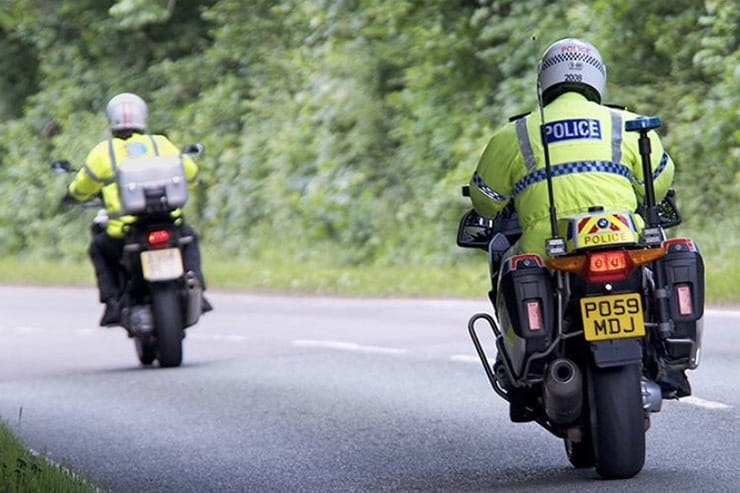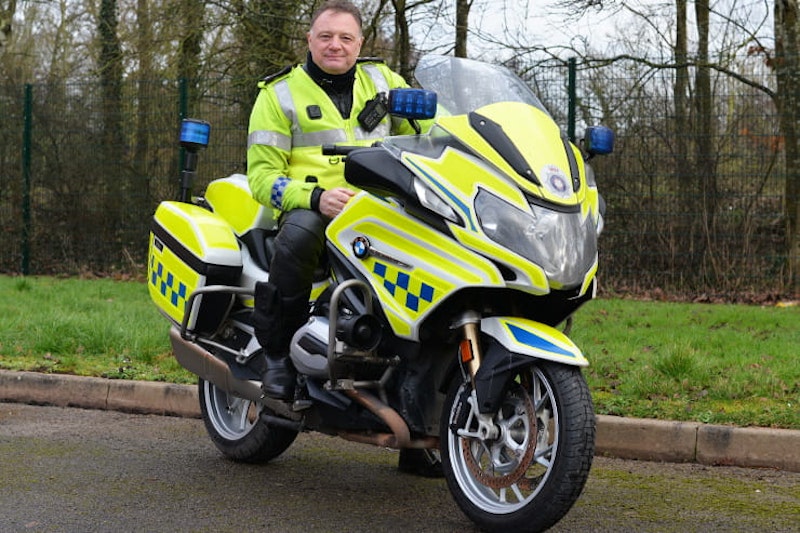What is BikeSafe advanced motorcycle training?
By Dave Yorke
Freelance journalist
05.02.2020
BikeSafe, the police-led motorcycle training scheme that’s helped thousands of riders significantly improve their skill and safety, is changing. We sent ex-Merseyside police sergeant Dave Yorke to speak to the people shaping the future of the accessible yet incredibly informative and valuable scheme that we here at Bennetts BikeSocial have long been huge fans of...
What is BikeSafe and how did it start?
BikeSafe started around 2000/2001 in Northwest England and North Wales, mainly as a result of the high numbers of motorcyclists being involved in collisions in North Wales. It seems that riders from the surrounding areas of Cheshire, Manchester and Merseyside were making a beeline for the superb roads and scenery in North Wales, but were too often not equipped with the skills to take advantage of the area.
That being the case, officers from Cheshire Police set up the first BikeSafe scheme as a way for police motorcyclists to offer education to riders. Soon, Greater Manchester Police and Merseyside Police joined, and it grew from there.
With more and more police forces getting involved, the whole operation was taken over by Humberside Police, and it stayed under their control while being overseen by the National Police Chiefs Council (NPCC).
Nick Adderley is Chief Constable at Northamptonshire Police, and has strategic overview of motorcycling in the NPCC. He’s also the boss of Chief Inspector Kevin Mulligan, whose been the National Lead of BikeSafe since 2016.
Kevin Mulligan is a Chief Inspector at Northamptonshire Police. An advocate of rider safety through further training, he’s a qualified police motorcyclist and rides a Harley Davidson in his personal time
Why is BikeSafe changing?
Put simply, BikeSafe has become too big to manage.
As a result of its success, BikeSafe has linked up with VideoBiker, which now runs the administration and the website that enables riders to book onto the nearest course; over the next five years we’ll see the number of courses offered by BikeSafe double.
While it’s a national scheme, the area where you live will have a police officer who co-ordinates the scheme in that area. They not only communicate with you once you’ve booked in, but they also ensure that they have a venue and the staff to deliver the course and observe your ride.
How many police forces have a BikeSafe scheme?
At present 34 out of the UK’s 43 police forces have a scheme, and more are expected to join in the future. Between 2011 and 2018, BikeSafe offered 5,000 courses to 60,000 riders, of which Kevin Mulligan reckons 20% went onto further advanced training via the IAM, RoSPA or the DVSA Enhanced Rider Scheme.
What is the format of BikeSafe training – how long does it take?
Courses have varied depending on the police force – some were split over two days (a day of theory and then the ride on a separate date) and some were completed in a day. Kevin says the National Bikesafe course will only be one day from now on, but if individual forces want to introduce a second day with a partner such as the IAM, then they can, but the national course will only be the first day.
How much does BikeSafe cost?
The set cost is £65 but, crucially, a police force may be able to offer a reduced cost in their area if they receive funding from the local council or road safety partnership. The cost riders pay will be shown on the website but it won’t be more than £65. In fact, there were 100 free courses offered in London at the end of 2019 as the entire cost was met locally.
What will I learn on a BikeSafe course?
Riders will get a morning session where advanced riding is discussed, along with videos explaining the whole IPSGA system that police riders use; that’s Information, Position, Speed, Gear, Acceleration.
The afternoon is taken up by a ride of about 80-100 miles with a police officer riding behind you. They’re not in radio contact, but give you feedback on where they think you could improve.
At the end of the day you get written advice covering where you might benefit from training. Also, as soon as you book, you get access to some PDFs covering cornering, overtaking and other key points that you can read before your course.
There are plans to modernise the classroom input as well; it’s been a few years since it was last updated and the new plans should see that no matter where you book or live, you’ll get the same material delivered in the same way.
What’s the future for BikeSafe?
Kevin tells me that BikeSafe wants to double the number of courses available in the next five years, but police forces are already pushed for resources. Officers often do the training on a rest day for no pay, then can claim that day’s leave back from their force to take when it suits them. That being the case, some police forces are already using volunteers to assist on the courses. These volunteers will have to demonstrate their riding to be able to assist, but it does mean that the rider that you get to asses you may not be a serving police officer.
I asked Kevin if that would dilute the experience as BikeSafe is supposed to be a Police-led initiative, and the main draw for a lot of riders is being able to ride with police motorcyclists – among the best in the business. He said that in forces where police volunteers were being used already, the feedback had been good.
Does BikeSafe and other advanced motorcycle training work?
Rider casualties have stayed stable at around 319-365 deaths per year for the last eight years, so I asked Kevin if he believed BikeSafe was having an impact, and if so, why aren’t the numbers reducing?
He gave an honest answer in that training is really hard to evaluate; all we know is that the numbers aren’t rising at the current level of BikeSafe commitment. Kevin says that gaining further training is definitely a good idea, but the last thing he wants to do is to tell people how to ride. He wants people to think about how they ride, and to take matters into their own hands.
Since I passed my own bike test, I’ve had to take an assessment ride to see if I could go on a police course, then take that four-week course to qualify as a standard police rider. Then it was another four-week course to become an advanced rider, then a further two-week course to become an escort outrider. In all that time I had to requalify every three to five years.
A day on a BikeSafe course isn’t going to give you all that, but it might set you on the road to thinking about your riding.
“I’ve taken BikeSafe twice,” says Bennetts BikeSocial’s consumer editor John Milbank. “Some riders seem to think it’s going to be a copper telling you to slow down, but that couldn’t be further from the truth. The thrill of riding with a fully-marked police bike behind you was the reason I went back for more, and I hope that stays part of the revised scheme as much as possible. The class training was also really engaging and enjoyable – when I did it, it was a day in the classroom, then the road work later.
“What I took from it really did change my riding; it made me think ‘what if’, and has me much more aware of hazards. But it hasn’t made me any slower; it’s just made riding even more enjoyable.”

